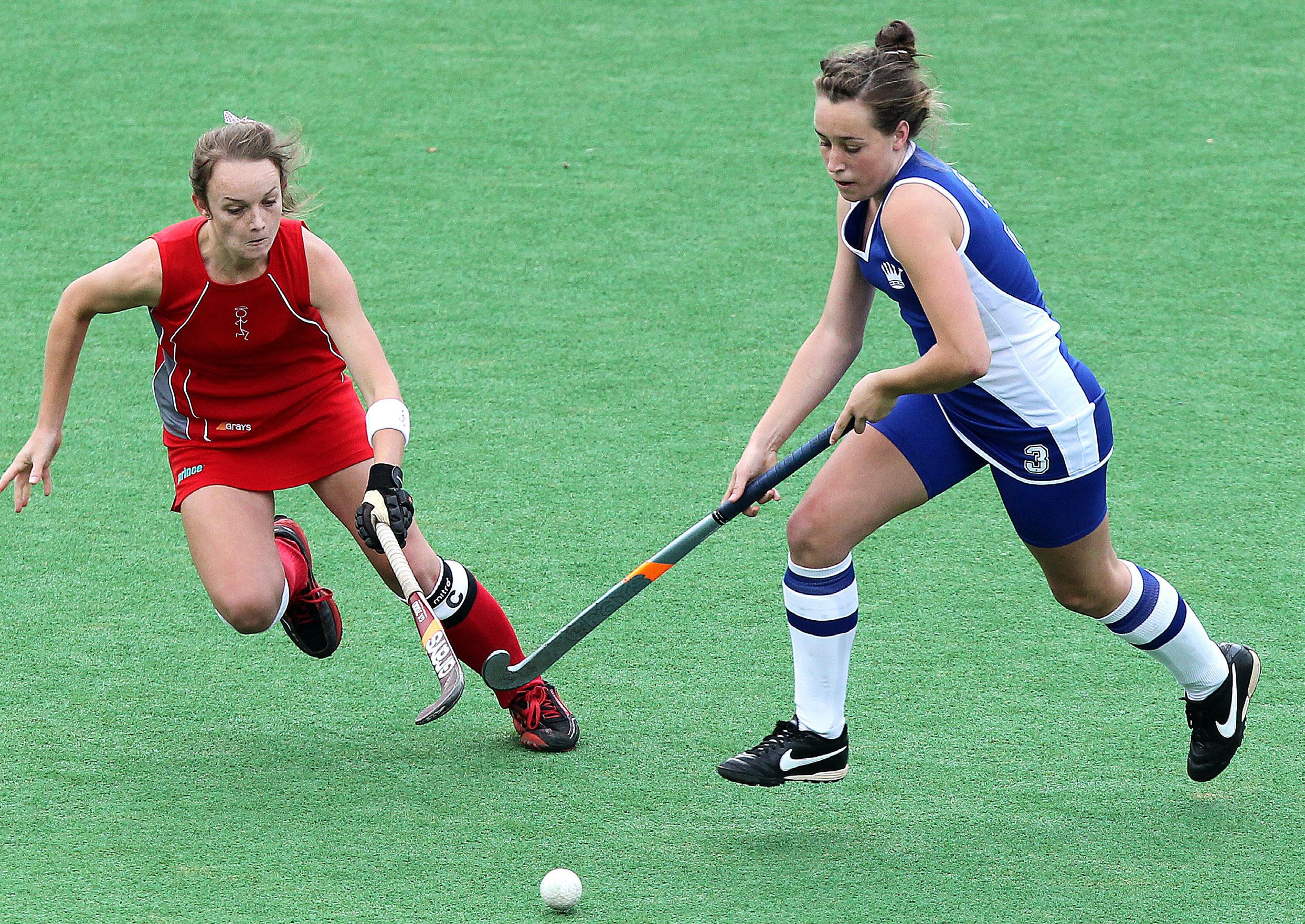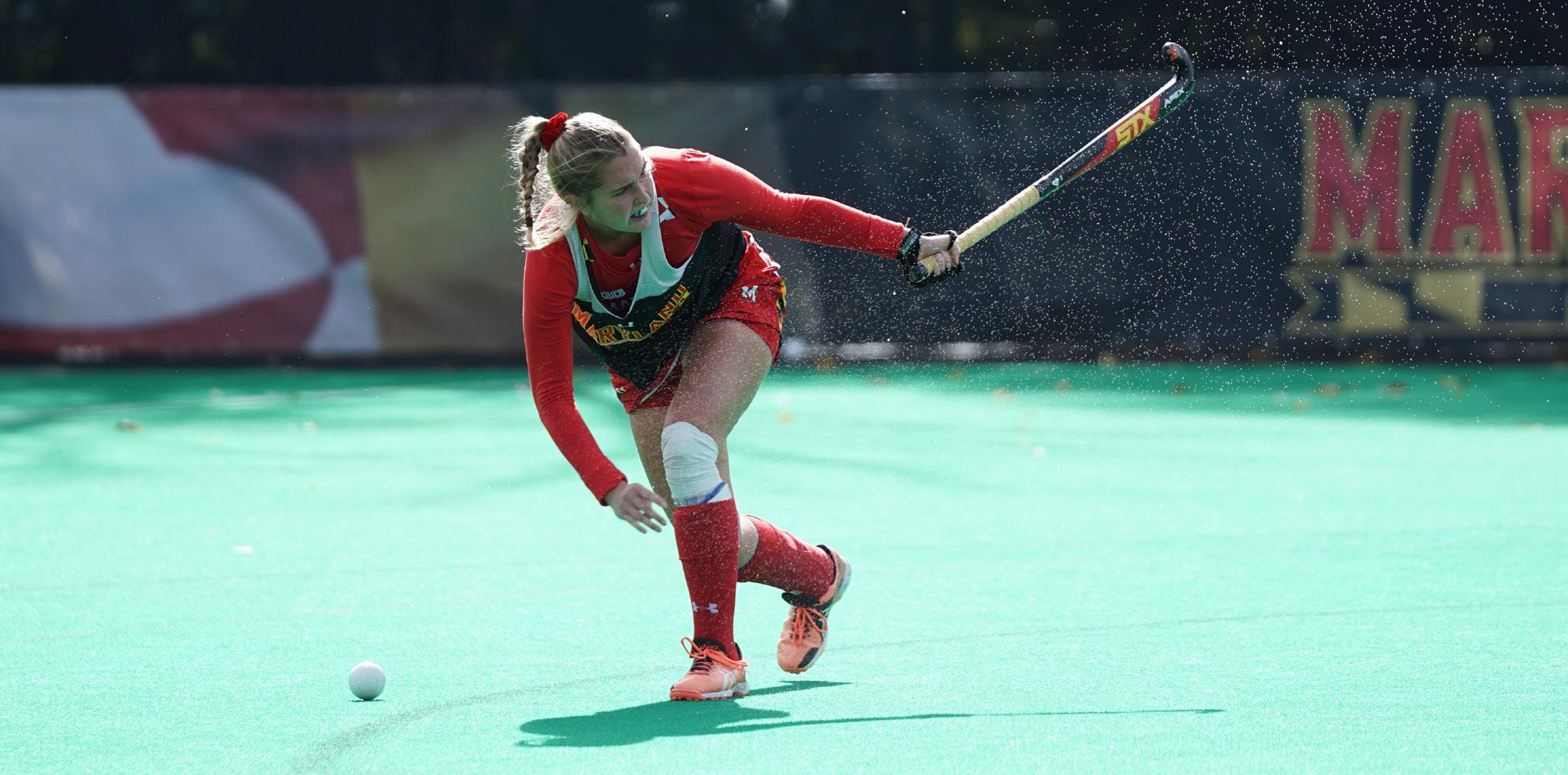
7 minute read
INJURIES DUE TO OVERUSE ARE OFTEN THE BIGGEST CHALLENGE
– Jo Verschueren –
Jo Verschueren is a doctoral student at the Human Physiology research group, Faculty of LK at the Vrije Universiteit Brussel and is also coordinator of Rehabilitation Sciences and Physiotherapy - Sports Physiotherapy option. In addition, he has gained experience as a physiotherapist in top-level sports with the national volleyball and hockey teams. His research focuses on (1) the effects of fatigue on the injury risk profile in the context of sports injury prevention; and (2) the effects of (sports) injuries on the brain and the interactions with fatigue in the context of rehabilitation and return-to-sport. He also still works as a self-employed sport physiotherapist to stay in touch with the clinical practice side of it. He is definitely the right man to introduce us to the world of injury treatment and prevention.

Mr Verschueren, hockey is not classified as a contact sport. Does this mean that there are fewer injuries than in other sports ?
Certainly not, hockey players are also confronted with sports injuries, although this is a very broad concept. It includes grazes, back injuries, muscle injuries or more serious injuries such as shoulder dislocation or head injuries. You could say that hockey is a dangerous sport because of the high number of injuries, but the injuries are generally not serious and often the player can return to the sport quickly. Skin injuries and ankle sprains are frequent occurrences in hockey, but the nature of the injury varies greatly between age groups.
What injuries are most common among young hockey players?
At a young age, hockey is taught in a playful manner and we see few sports injuries. Because children play a lot, also outside of hockey, they may occasionally have some pain after training, often due to a slight overload. From the growth spurt onwards, the number of injuries due to overloading increases. The body changes very quickly and the muscles and tendons need time to adapt. This translates into tendon problems, often in the groin, knee or foot.
Do other injuries appear after that growth spurt ?
And then, of course, good treatment is vital.
After the growth spurt, the intensity of the game goes up and we see more acute muscle injuries and ankle sprains. Back pain is also a characteristic feature of hockey players, especially those who practise the sport as a hobby and who also have to manage the combination of family and work. Hockey is not a contact sport per se, as pushing with hands or shoulders, for example, is not allowed. However, other types of contact are possible. During the game, a ball or stick can hit you or the opponent. This leads to bruising, where - after an initial pain reaction - the player can usually resume play quickly. Sometimes, however, a crack or break can cause the player to be out for some time.
In the case of acute sports injuries, such as muscle injuries or ankle sprains, it will be necessary to administer good initial care. We swear by the acronym “POLICE” (Protect, Optimal Load, Ice, Compression & Elevation). The player is taken out of the match or training session to protect him from further injury, to apply ice and provide support using crutches where necessary. After this, the doctor will decide on the treatment, often prescribing physical therapy to accompany the rehabilitation. Injuries due to overuse are often the biggest challenge. Because players will often have the feeling they can continue playing, although in pain, and often deny themselves the care that the injury needs from the start. Open and clear communication within the team is very important. It is important to be on the ball and, in consultation with the doctor and sports physiotherapist, to start an appropriate care programme. The rehabilitation team can determine when the sport can be resumed, possibly with some adjustments and guidelines, and still in combination with appropriate care.
The ideal rehabilitation period does not exist for sports injuries. Whereas in the past a certain period of time was often linked to a particular injury (e.g. three weeks out after an ankle injury), scientific literature shows that functional recovery can vary greatly over time. This is also seen daily in the practice of the sport physiotherapist. One athlete recovers faster than the other. This is also highly dependent on the type of sports injury and any other injuries it may have caused. However, there is usually a minimum recovery time that must be respected. It is all about finding the right balance between recovery time from the injury and the recovery of strength, stability and coordination in the body. One overarching insight, however, is that resuming the sport too soon only increases the risk of a new injury. Therefore, you have to give yourself the time to recover: if in doubt, hold out!
Athletes obviously want to be back in action as soon as possible. How long do they ideally rehabilitate?

Prevention is the best cure, as the saying goes. Do you agree with this statement?
Hockey is clearly on the rise, not least due to the performance of the Red Lions ...
Of course, I do. Injury prevention is very important in sports in general, so also in hockey. Injuries can be prevented by proper preparation and preventive exercises. Two strategies are generally recognised. On the one hand, you have the schemes where the entire team follows the prevention programme, often as part of the regular training or warm-up. On the other hand, you have the individual approach, which involves training typical movement patterns and risk factors in a more targeted manner. However, you should not forget that good physical preparation and targeted training are also very important in terms of injury prevention. A person in good physical condition can handle the strain that hockey puts on them better and also has a lower risk of injury.
How is injury prevention addressed in hockey?
What about stretching? Some people swear by it, others don't see the point ...
There is no standard protocol for hockey players on injury prevention. Inspiration can be drawn from, for example, the prevention programmes for ankle sprains and muscle injuries that exist in other sports. Performing balance and stability exercises during the warm-up helps to reduce the number of ankle sprains. This can be combined with hockey-technical games to make it more fun. For example, keeping the ball high on the stick or certain technical skills and types of dribbling. The prevention of muscle injuries can be achieved through proper physical preparation and warming up, but also through targeted strength training. Integrating certain forms of training (e.g. Nordic Hamstring Curl) into the warm-up can also reduce the number of hamstring injuries. However, these are tough muscle exercises that are best learnt and performed under supervision within the limits of each individual’s abilities.
Stretching has no effect on the prevention of muscle injuries - quite the contrary. Static stretching of a muscle before an effort reduces the capacity of the muscle to deliver force and is more likely to be disadvantageous. However, these insights have not yet reached practice in the field, where many athletes still do static stretches before the sports activity. Dynamic stretching can be part of a good warm-up, but it has no direct effect on injury prevention.
What do you think the ideal ‘medical setting’ looks like at a hockey club?
At a recreational level, I strongly recommend looking at the local network for a suitable sports physiotherapist and sports doctor who can advise the club and players where necessary. There are all kinds of platforms / websites where you can look for recognised specialists in the field. At a professional level, a permanent sports physiotherapist who can work together with a doctor is a minimum, but a permanent team doctor is of course recommended. The physiotherapist and doctor must work well together and consult with the technical staff, with respect for each other’s qualities and knowledge. This is the only way to achieve good physical preparation and injury prevention. Physical coaching, but also mental coaching by a sports psychologist and professional dietary advice have also clearly proven their value in my experience. If further additional expertise is required, Belgium can also fall back on the expertise present in its universities.
Hockey is also simply a fantastic sport that can contribute enormously to children’s motor development. It is a game sport in which running technique, skilful footwork, strength, endurance and eye-hand coordination come together in a unique way. So don’t be put off by this story about sports injuries, but discover the fun that hockey can offer for yourself.








